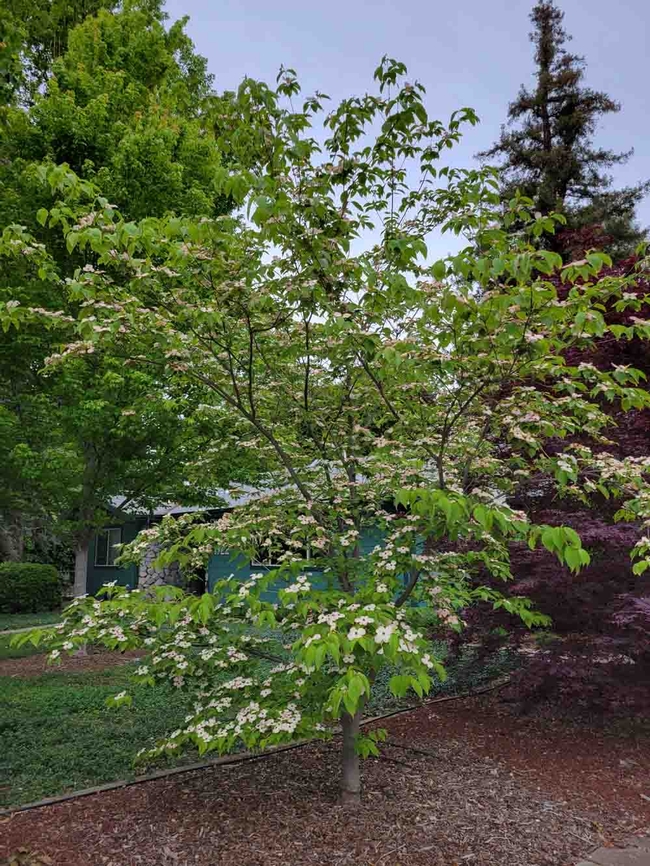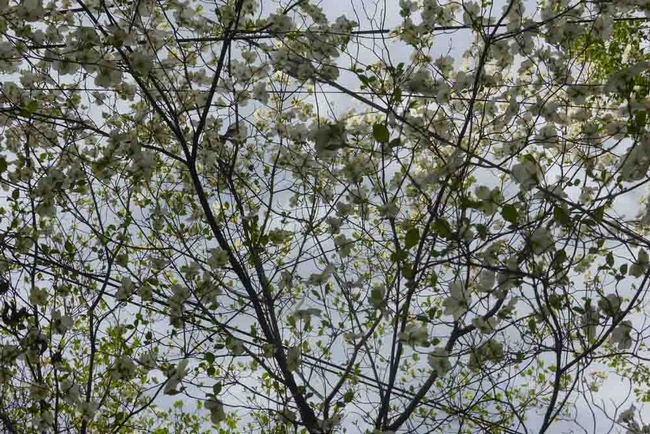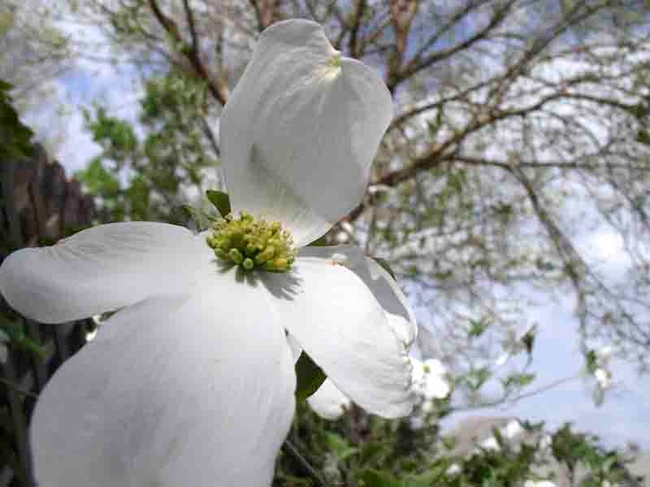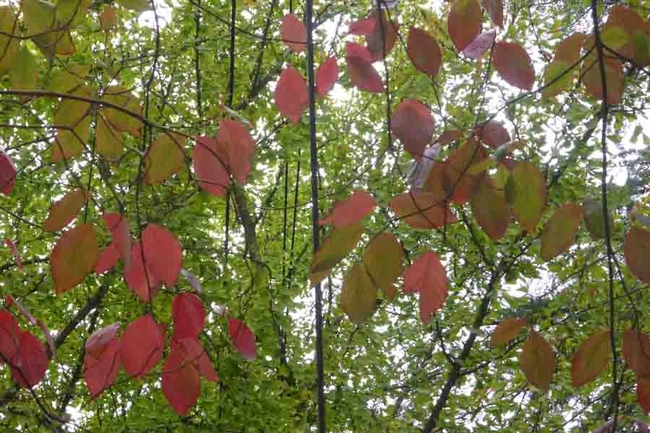Ideally, you'd be reading this in very early spring, when the dogwood bloom is beginning to work its elegant magic in the older neighborhoods fanning out from Lower Bidwell Park and downtown Chico. Their flowers bloom before dogwoods leaf out, so the blooms appear to float, suspended on slender, graceful branches. But now, although their bloom time is over for the year, the new foliage on dogwoods makes them attractive landscape trees, creating filtered shade in gardens and yards across town.

General Characteristics: Dogwood trees are on the small side, ranging between 15 to 40 or so feet high. Typically, trunks are one foot or less in diameter, and often sport multiple stems. They provide four full seasons of delight: spring flowers, summer leaves, fall color and berries, and once all of those have dropped off in winter, the trunk displays a distinctive patterned bark and a pleasing rounded form with horizontal branching.

Cornus florida: The flowering dogwood is a popular landscape tree throughout the United States, and is commonly seen here in Chico and our surrounding area. The species name florida or florido is Spanish for “full of flowers” or “flowery”. Native to the Eastern US and northern Mexico, flowering dogwood attains its greatest size, up to 40 feet tall, in the Upper South where hot, humid summers contribute to new, lush growth. In other climates, such as ours, heights of 30–33 feet are more typical. This dogwood species' life span tops out at about 80 years. While its berries, ranging from bright red to yellow with a rosy blush, taste awful to humans, they are not toxic, and are an important source of food for many birds.

Cornus nuttallii: The species name of the Pacific dogwood honors Thomas Nuttall, an English botanist and zoologist who lived and worked in America from 1808 to 1841. Nuttall travelled widely and published a number of books on North American plants and birds. Almost 100 plant and animal species bear his name.
Nuttall's namesake dogwood species is commonly known as western dogwood, mountain dogwood, and Pacific mountain dogwood, as well as Pacific dogwood. This species is native to a large swath of western North America, sweeping down the continent from southern British Columbia to southern California, with an isolated population cropping up in central Idaho. On a California map, its distribution pattern looks like a large cane. The short, hooked end starts in the coast range north of the San Francisco Bay, thickening as it bends east through the Klamath and Siskiyou mountains, with the straight side of the cane extending south through the western slopes of the Cascades and Sierra Nevada mountains to the southern end of the great Central Valley. A small distribution also occurs in the southwestern corner of the state.

Besides its timeless aesthetic appeal, the Pacific dogwood has various utilitarian functions. It was an important plant for the Native tribes of the continent's west coast. Medicinally, the bark was used as a laxative, a tonic, an antiseptic, and for relief of stomach pain. Peeled twigs provided natural toothbrushes, and smaller branches were sometimes used in baskets. Today the wood of the Pacific dogwood is often used for fashioning items such as tool handles and cutting boards because of its hard, strong wood and beautiful tight grain. It has also been used to make thread spindles, golf club heads, and piano keys.

I love the ethereal beauty of the dogwood. Since a large number of cultivated dogwood trees grace our area, evidently so do many others. In fact, dogwood was among the top choices for America's National Tree in a nationwide survey hosted by the Arbor Day Foundation, coming in third behind the oak and redwood: a very respectable ranking!
UC Master Gardeners of Butte County are part of the University of California Cooperative Extension (UCCE) system. To learn more about us and our upcoming events, and for help with gardening in our area visit our website. If you have a gardening question or problem, email the Hotline at mgbutte@ucanr.edu or leave a phone message on our Hotline at 530-552-5812. To speak to a Master Gardener about a gardening issue, or to drop by the MG office during Hotline hours, see the most current information on our Ask Us section of our website.